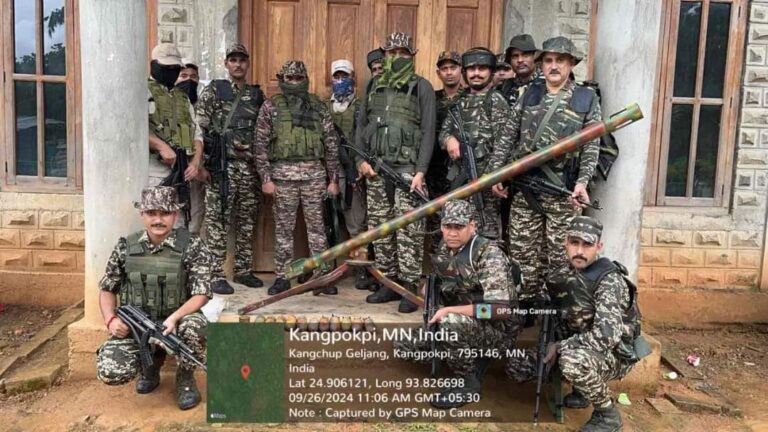Manipur CM Biren Attends Screening of Historic Film “Chahi Taret Khuntakpa”
Summary of the News Article
Manipur Chief Minister N. Biren Singh recently attended the screening of the historic film Chahi Taret Khuntakpa (The Seven Years’ Devastation) at Kangla Hall in Imphal. This film sheds light on one of the darkest and most defining periods in Manipuri history, the Burmese invasion of 1819–1826. Highlighting the resilience of the Manipuri people during this tumultuous time, the movie has been lauded as a significant effort to preserve and celebrate the region’s rich heritage.
Exploring the Seven Years’ Devastation: A Defining Chapter in Manipuri History
Introduction to Chahi Taret Khuntakpa
Manipur is no stranger to history lovers, boasting a rich cultural and historical tapestry that has survived the test of time. But one chapter stands out—the Chahi Taret Khuntakpa, or the Seven Years’ Devastation. This was a grim period (1819–1826) when Burmese forces invaded and occupied Manipur, causing untold suffering. The film Chahi Taret Khuntakpa brings this significant historical episode to life, combining education and emotion to inspire modern audiences.
Understanding the Seven Years’ Devastation
The Backstory: What Led to This Catastrophe?
In the early 19th century, Southeast Asia was in flux. Manipur, under Maharaja Marjit Singh, faced challenges in maintaining sovereignty as external threats loomed. The Burmese kingdom, ambitious and expansionist, saw an opportunity to exert its dominance. What followed was a series of invasions that plunged Manipur into chaos.
The Invasion: A Tale of Brutality
The Burmese invasion wasn’t just a military conquest; it was a systematic dismantling of Manipuri society. Imagine waking up to find your world turned upside down—homes destroyed, families displaced, and the very fabric of your culture under siege. Thousands fled to neighboring regions like Cachar and Assam, leaving behind a homeland scarred by war. Even the royal family wasn’t spared; they sought refuge as the kingdom fell.
The Occupation: Seven Years of Despair
During the occupation, life in Manipur was anything but ordinary. Agricultural activities stalled, leading to famine and widespread suffering. Cultural and religious practices were suppressed, creating a vacuum of identity and hope. For the people who stayed behind, survival became the only goal.
The Path to Liberation: Fighting Back with Grit
The Spirit of Resistance
Despite the odds, Manipuris didn’t give up. Leaders like Maharaj Gambhir Singh and others organized guerrilla warfare, proving that the human spirit can shine brightest in the darkest times. Every skirmish was a reminder that Manipur might have been occupied, but it wasn’t defeated.
Strategic Alliances with the British
Realizing that fighting alone might not be enough, Manipuri leaders sought help. The British, keen on countering Burmese influence in the region, became allies. This partnership wasn’t just a military strategy; it was a calculated move to reclaim sovereignty.
The Treaty of Yandabo
In 1826, the Treaty of Yandabo ended the war between the British and Burmese, effectively liberating Manipur. The Burmese withdrew, and Maharaj Gambhir Singh ascended the throne. The scars of occupation remained, but so did the lessons of resilience.
The Aftermath: Rebuilding a Broken Kingdom
Reconstruction and Revival
Post-liberation, Manipur began the long road to recovery. Crops were replanted, temples were rebuilt, and cultural traditions were revived. Festivals and dances, which had been suppressed, returned with fervor, symbolizing the restoration of life.
Preserving History Through Stories
The experiences of the Seven Years’ Devastation weren’t just forgotten; they were immortalized. Folklore, oral histories, and written accounts ensured that future generations would remember this chapter, not just as a tale of suffering but as a story of resilience.
The Film “Chahi Taret Khuntakpa”: A Cinematic Tribute
Aims and Objectives
The film isn’t just about re-telling history—it’s about reliving it. By bringing these events to the screen, the filmmakers hope to educate audiences about Manipur’s heritage and inspire pride in its history. It’s like a time machine, taking viewers back to witness the courage and unity of their ancestors.
Impact on Modern Audiences
The screening, attended by CM N. Biren Singh, has struck a chord with viewers. It’s more than a movie; it’s a bridge connecting the past to the present. For younger generations, it’s a chance to understand where they come from and why their history matters.
Why This Story Still Matters
History isn’t just about dates and events; it’s about lessons. The Chahi Taret Khuntakpa teaches us that even in the face of adversity, resilience can prevail. It’s a story that resonates universally, reminding us that identity, culture, and courage are worth fighting for.
FAQs
- What is the significance of the Seven Years’ Devastation?
- It marks one of the most challenging periods in Manipuri history, showcasing the resilience and bravery of its people.
- What role did Maharaj Gambhir Singh play in Manipur’s liberation?
- He led resistance efforts and was instrumental in reclaiming the kingdom from Burmese occupation.
- What is the Treaty of Yandabo?
- Signed in 1826, this treaty ended the war between the British and Burmese, leading to Manipur’s liberation.
- How does the film “Chahi Taret Khuntakpa” contribute to Manipur’s heritage?
- By dramatizing historical events, it educates and inspires pride in Manipuri history and culture.
- Why is preserving such stories important?
- These stories connect us to our roots, offering lessons in resilience and unity that remain relevant today.



